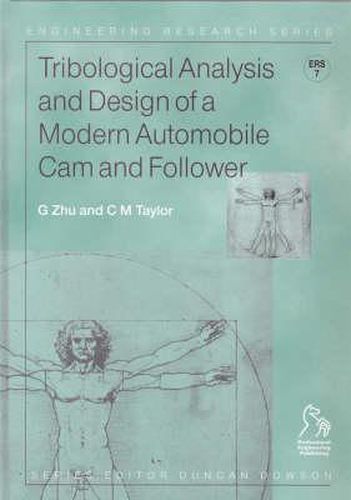Readings Newsletter
Become a Readings Member to make your shopping experience even easier.
Sign in or sign up for free!
You’re not far away from qualifying for FREE standard shipping within Australia
You’ve qualified for FREE standard shipping within Australia
The cart is loading…






An Engineering Research Series title. This excellent and long awaited book is based upon extensive research carried out by the Institute of Tribology at the University of Leeds in the UK and the Ford Motor Company Ltd. It is concerned with both the theoretical and experimental study of the tribological performance of an automobile valve train, having an offset taper cam and a domed follower, incorporated with an hydraulic lash adjuster, with particular reference to the ZETA engine valve train. A sophisticated theoretical model has been developed that predicts the tribological performance of the valve train, and also provides a useful tool for the consideration of the tribological design of valve trains. Additionally the model can estimate the instantaneous and average rotational frequency of the follower, and the performance of the hydraulic lash adjuster. In order to validate the theoretical model, the experimental measurements have been correlated with the theoretical predictions that simulate the test conditions of the valve train. The agreement between the measurements and the predictions show that the model is very reliable. This gives readers great confidence in using the model when dealing with novel and alternative designs of the valve train. The complete contents include: Part One - theoretical formulation, kinematics and dynamics of the cam and follower, hydraulic lash adjuster, the maximum hertzian stresses, asperity interactions, the oil film thickness, friction and power loss of the valve train, the rotation of the follower, the overall solution procedure and input/output data, and an example of the tribological analysis of a valve train; Part Two - experimental Study, test apparatus and the instrumentation, calibration of the instrumentation and commissioning tests, test procedure, data processing, and experimental results and discussions; Part Three - correlation of theory and experiments, experimental evidences, theoretical predictions, comparison of results and discussions, and overall conclusions.
$9.00 standard shipping within Australia
FREE standard shipping within Australia for orders over $100.00
Express & International shipping calculated at checkout
An Engineering Research Series title. This excellent and long awaited book is based upon extensive research carried out by the Institute of Tribology at the University of Leeds in the UK and the Ford Motor Company Ltd. It is concerned with both the theoretical and experimental study of the tribological performance of an automobile valve train, having an offset taper cam and a domed follower, incorporated with an hydraulic lash adjuster, with particular reference to the ZETA engine valve train. A sophisticated theoretical model has been developed that predicts the tribological performance of the valve train, and also provides a useful tool for the consideration of the tribological design of valve trains. Additionally the model can estimate the instantaneous and average rotational frequency of the follower, and the performance of the hydraulic lash adjuster. In order to validate the theoretical model, the experimental measurements have been correlated with the theoretical predictions that simulate the test conditions of the valve train. The agreement between the measurements and the predictions show that the model is very reliable. This gives readers great confidence in using the model when dealing with novel and alternative designs of the valve train. The complete contents include: Part One - theoretical formulation, kinematics and dynamics of the cam and follower, hydraulic lash adjuster, the maximum hertzian stresses, asperity interactions, the oil film thickness, friction and power loss of the valve train, the rotation of the follower, the overall solution procedure and input/output data, and an example of the tribological analysis of a valve train; Part Two - experimental Study, test apparatus and the instrumentation, calibration of the instrumentation and commissioning tests, test procedure, data processing, and experimental results and discussions; Part Three - correlation of theory and experiments, experimental evidences, theoretical predictions, comparison of results and discussions, and overall conclusions.